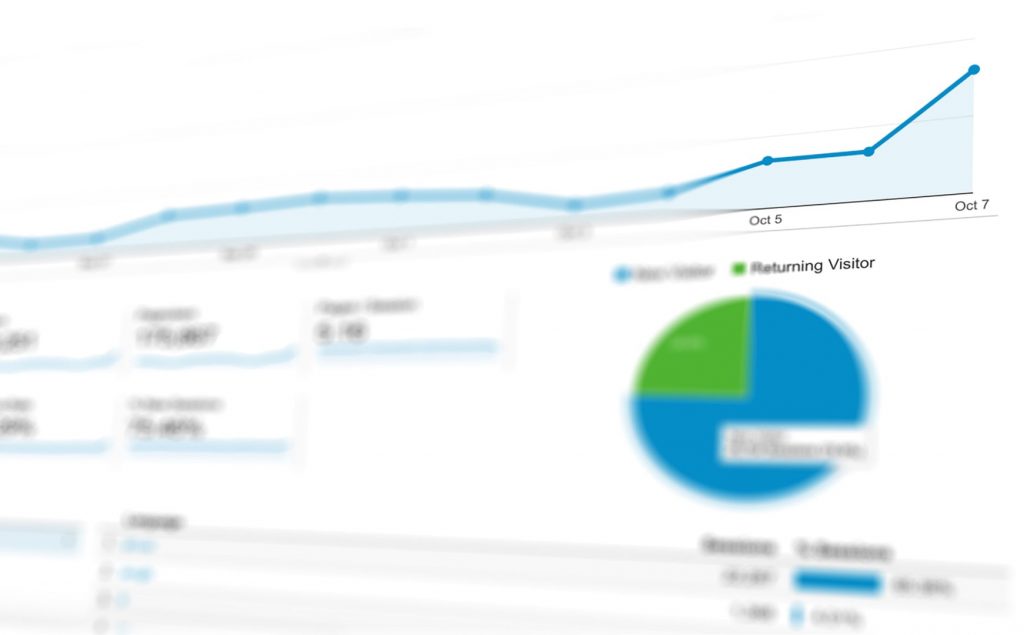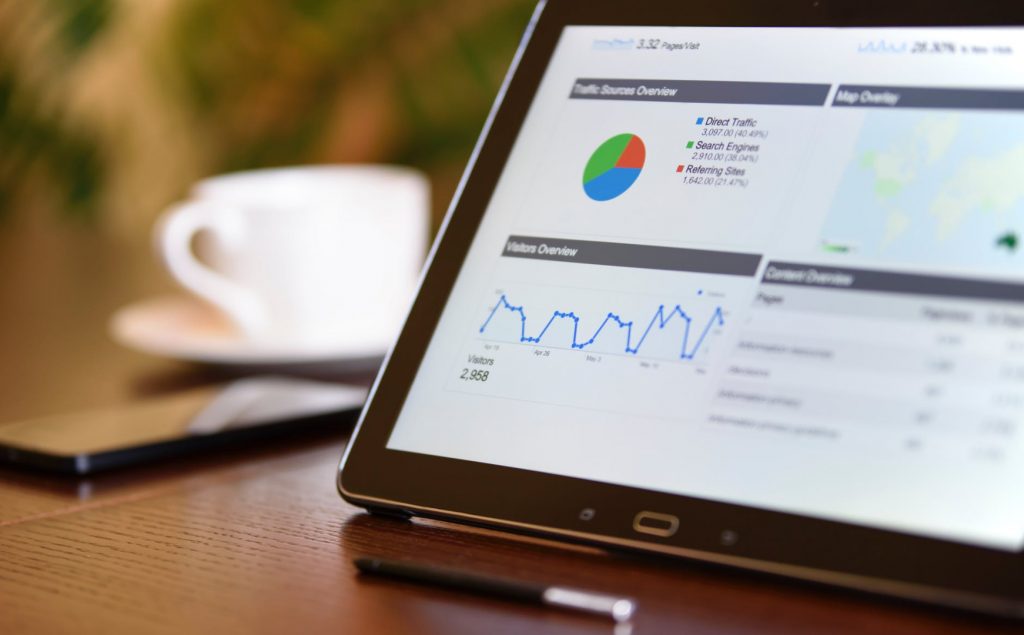The Google Analytics Academy provides an opportunity to learn Google’s online measurement tools for free in order to help organizations grow their businesses. Ever since I became an SEO Content Strategist for Cosmic Development, I got interested in how the website content I wrote ranks on Google and who comprises the audience that reads both the website content and the blog articles. Therefore, I decided to learn how to utilize Google Analytics for the company’s benefit and to discover how to collect and analyze intelligence data. After a short research, I discovered that the Google Analytics Academy offers six free online courses about every one of Google’s measurement tools. I decided to complete one course per month and to implement the knowledge that I gain in the SEO content strategy for Cosmic’s website and blog. If you continue reading the article below, you will discover my personal experience with the following six courses and the benefits that each of them offers:
- Google Analytics for Beginners
- Advanced Google Analytics
- Google Analytics for Power Users
- Getting Started with Google Analytics 360
- Introduction to Data Studio
- Google Tag Manager Fundamentals

Course 1: Google Analytics for Beginners
The first free online course of the Google Analytics Academy discusses basic features and it is known as the Google Analytics for Beginners. This course taught me the fundamentals of Google Analytics and led me into the world that now is part of my everyday tasks. At first, it showed me how to create and set up my Google Analytics account, as well as how to navigate through its interface. The course gave me the opportunity to learn through practical examples both overview and full reports in order to understand and implement the knowledge in my work. It also defined the Audience, Acquisition and Behavior reports, thus guiding me through the process of campaign and conversion tracking.
After completing the Google Analytics for Beginners course, I was able to use the basic features of Google Analytics on my own and to create and understand its reports. This course also prepared me for measuring custom campaigns and Google Ads campaigns. I became capable of conducting reports and campaigns on my own, for the purposes of performing my daily tasks and job responsibilities.
Course 2: Advanced Google Analytics
After acquiring the basic Analytics knowledge, Google Analytics Academy left me with a hunger for learning more features, collecting more data, and creating reports. That is why I could not wait to begin with the second course: Advanced Google Analytics. This advanced course guides learners through the Google Analytics configurations that track, collect and process data beneficial for their businesses. Following this course enables learners to become familiar with how to categorize the data according to users and sessions, and how to create a measurement plan.
After completing the Advanced Google Analytics course, I was able to create new custom metrics and custom dimensions, and also to understand already-set custom metrics and dimensions. Moreover, I acquired the required skills for conducting data analysis according to a channel, or according to an audience. This course also tackled a set of additional advanced marketing tools that are useful to the business. Those tools are beneficial for remarketing strategies as well as for targeting the audience with dynamic remarketing.

Course 3: Google Analytics for Power Users
Having completed both the beginners and the advanced course of the Google Analytics Academy, I was ready to broaden my knowledge to a level of a power user. The Google Analytics for Power Users is a course that has the main purpose to teach learners how to measure the website traffic and to see which users will convert or not.
When I finished the course Google Analytics for Power Users, I was able to analyze the website users and to compare the users who converted with those who did not convert. I also gained more confidence in analyzing various traffic sources and discovering which of them brings the most value to the website. Besides, I was also able to customize channels and improve e-commerce performance. And last but not least, I used the knowledge that I gained from this course on identifying which content from the website showed top-performing metrics. Analyzing the content helped me a lot with the SEO content strategy for the website and its blog. I also learned how to improve the website content according to the analysis made with Google Analytics. This course helped me especially in my work and I discovered the path that our readers take from the moment they enter our website until they exit it.
Course 4: Getting Started with Google Analytics 360
With the fourth course Getting Started with Google Analytics 360, I discovered that Analytics 360 is the enterprise version of Google Analytics. Analytics 360 is part of the Google marketing platform that connects Google’s enterprise advertising and marketing products. That way, Google Analytics 360 helps marketers plan, buy, measure, and optimize digital media and customer experiences.
This course introduced me to powerful and advanced features that are not available on the standard Google Analytics product, such as roll-up reporting, custom funnels, unsampled reports, and custom tables. In addition, I got familiar with BigQuery reporting and its benefits, as well as with the products of Google Marketing Platform integrations and Google Ad Manager. Furthermore, I was able to learn the Campaign Manager integration and how to use CM reports, dimensions, and metrics. The same thing applies to the Display and Video 360 integration and to the Google Ads 360 integration. What is most important is that I was able to experience real-world examples in order to understand how to use the Google Analytics 360 features and integrations for the purposes of achieving the business goals.

Course 5: Introduction to Data Studio
The Introduction to Data Studio is one of the two final courses of the Google Analytics Academy that do not delve into Google Analytics any further. Instead, both courses instigate the Google Analytics features and teach marketers how to visualize data online so that they can gain better insights into their business performance. Data Studio is a free data visualization tool that lets you illustrate your data in powerful reports. This introductory course into Data Studio helps in collecting and connecting data, creating reports, and collaborating with other coworkers.
Data Studio is the tool that changed the way I completed my daily work tasks and which made my job easier. Namely, while following the Google Analytics Academy courses, I was creating monthly and weekly reports for the performance of the website and blog I was working on. However, when I completed the Introduction to Data Studio course, I was overwhelmed with the opportunities and benefits it offered for creating such reports. Data Studio, as a free data visualization tool, let me collect data and illustrate it in powerful reports. After learning how to use it, I began creating performance reports for the website and blog I am working on. I just linked the company’s Google Analytics account with Data Studio and the data was automatically transferred. Since then, I have been creating both monthly and weekly reports without spending too much time analyzing with Google Analytics. I just make sure to change the dates according to the period that I want to analyze, and Data Studio shows me everything I need in order to decipher the website and blog performance.
Course 6: Google Tag Manager Fundamentals
Google Tag Manager Fundamentals is the final course of all six free online courses of the Google Analytics Academy. This final course shows learners how to easily implement and update multiple analytics and marketing tags for a website. The course guides learners through the basics of Tag Manager, which includes developing a measurement plan and a tag management strategy.
Thanks to the Google Tag Manager Fundamentals course, I learned how to create website tags and triggers, how to transfer valuable information from a website into Google Analytics, and how to use Tag Manager in order to easily manage both marketing and remarketing efforts. This course helped me understand how to use Tag Manager not only for desktop but also for mobile phones. Moreover, I discovered how to manage multiple analytics and marketing tags, and how to prevent redundant and incorrect tags from reducing the website performance and distorting data measurement.
Sources:

